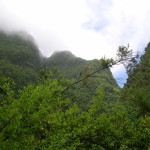Standards A2.1.1-A2.1.9
Early life on Earth
Life was thought to have evolved between 3.5 and 3.9 billion years ago. Life on Earth was very different to the comfortable conditions we enjoy today in the holocene (current period).
Key differences can be summarised:
- The atmosphere consisting mostly of reducing gases such as ammonia, methane and carbon dioxide (reducing means they react by giving electrons) There was no oxygen.
- . There were high levels of ultraviolet and solar radiation (this is because there was no protective ozone layer
- Temperatures were much higher than today, probably exceeding 100 ℃, resulting in more These conditions would have resulted in extreme weather events, including frequent electrical storms.

Cells are the smallest unit of life
This means that each cell should show the characteristics of life.
This can be summarised by the mnenomic MR M GHREN
Movement – either movement of the organism or the controlled movement of molecules within the cell (ex. active transport across membranes)
Response to stimuli – the ability to respond to changes in the environment (ex. move towards food).
Metabolism – biological reactions that regulate life processes (ex. respiration)
Growth – the increase in the size of cells
Homeostasis – regulation of the internal environment eg. pH
Reproduction – the ability to produce more cells (ex. by mitosis)
Excretion – the removl of wastes
Nutrition – the assimilation of nutrients

The origin of Organic chemicals
One of the challenges of explaining the origin of life, is considering how the sort of complex molecules such as proteins could have first formed. Amino acids and carbohydrates do not simply form under the current conditions on Earth.
An interesting experiment by two Scientists Muller and Urey, hinted that maybe under early conditions on Earth, where lightning and an atmosphere filled with toxic ammonia with methane and hydrogen, it might have been possible.
In their famous experiment, aiming to replicate this environment, they managed to stimulate amino acids and other carbon compounds to form.
It is since thought that some of their assumptions about the conditions of early Earth were incorrect (ex. the amount of reducing gases was probably less than the levels used in their experiment).

Watch the video and be aware of the implications of these three famous experiments on the possible origin of life. Make some notes summarising the findings of each one.
Potential stages in the Origin of the first cells
- Small organic molecules form spontaneously
- Larger organic molecules form from smaller ones
- RNA begins to self-replicate and catalyse reactions
- DNA takes over as the more stable genetic form
- Life reactions become encapsulated in a cell membrane
A little later the two domains archea and prokaryotes combined to form a third domain, eukaryotes. This idea of some cells being incorporated into other cells is called the endosymbiotic theory.
Who was Luca?
LUCA stands for Last Universal Common Ancestor.
Although other life forms existed before LUCA, it is thought that all of life today is related to one species of bacteria that probably survived in hot steam vents under the ocean.
One piece of evidence for this is that all life follows the same DNA code (for example the mRNA codon AUG always means START with methionine).





